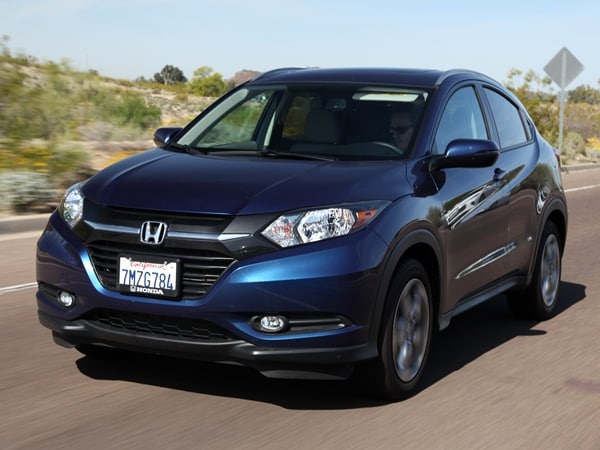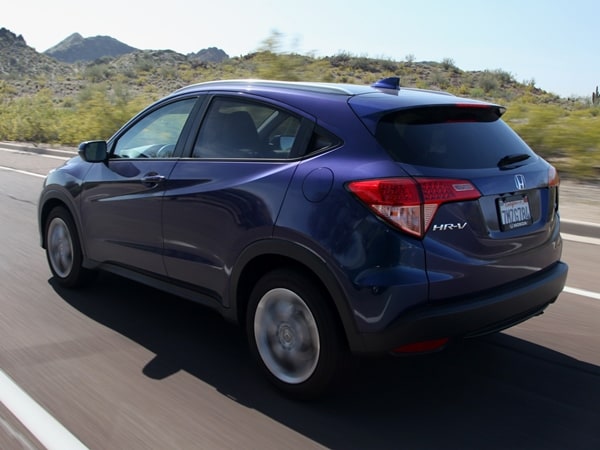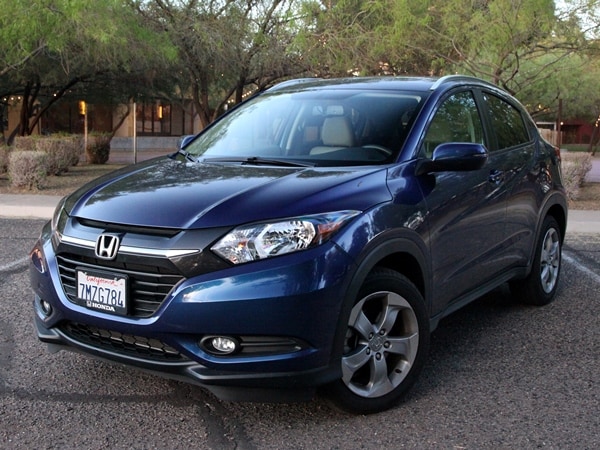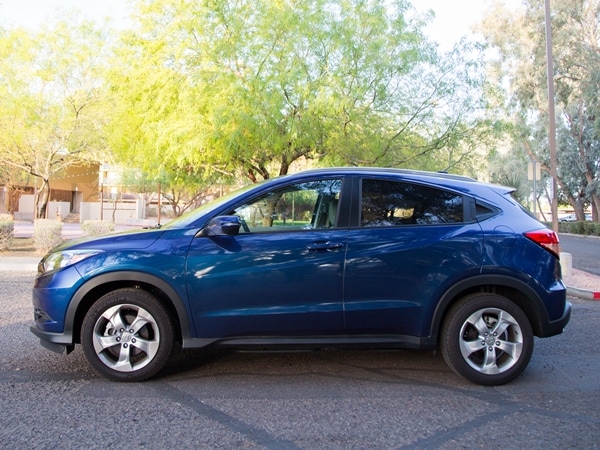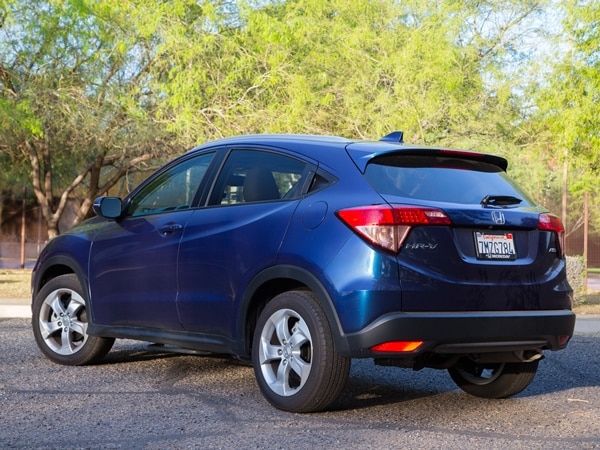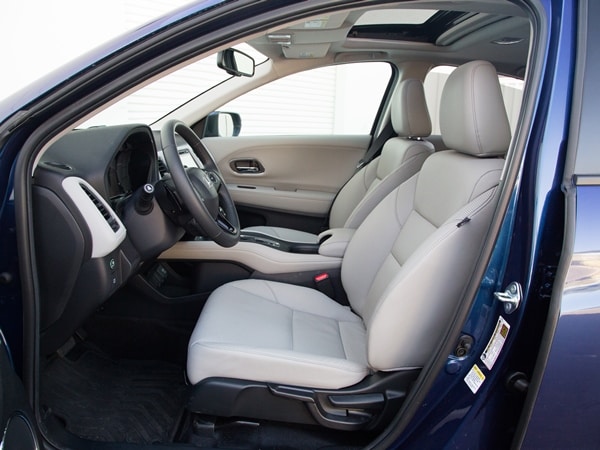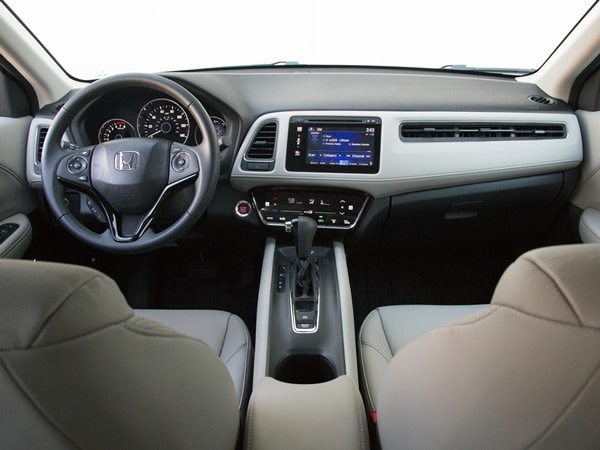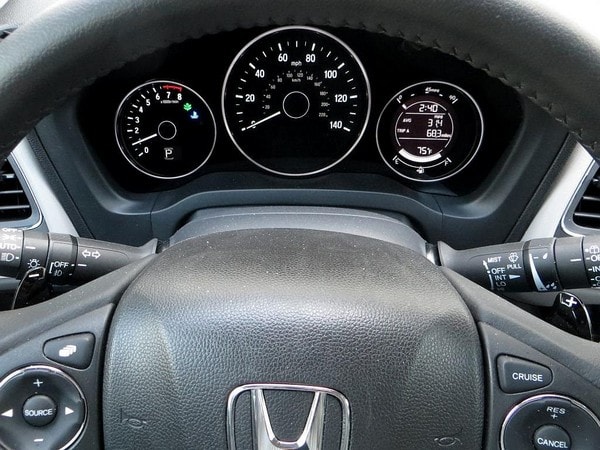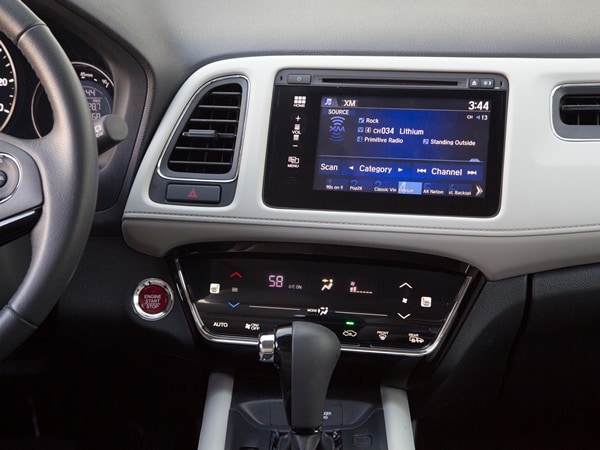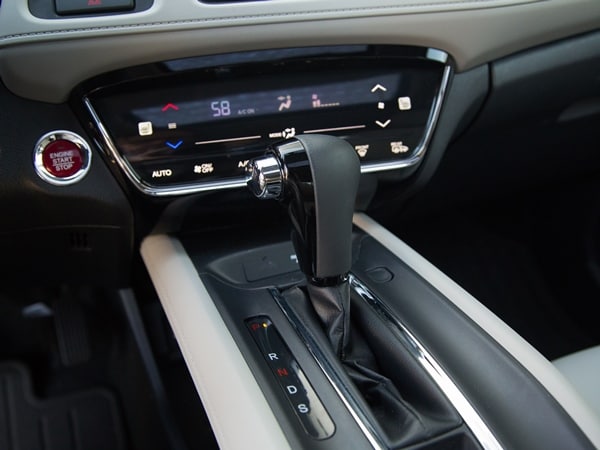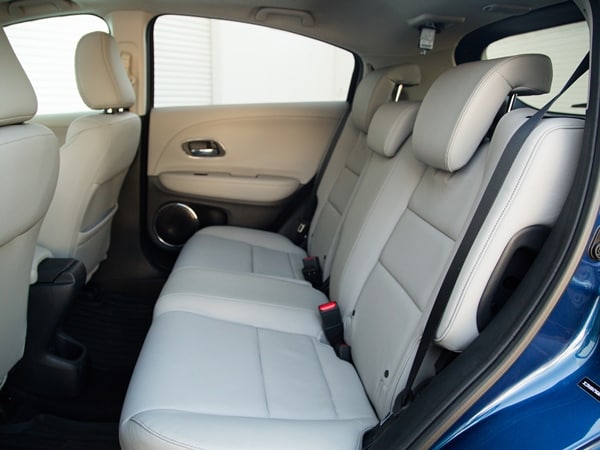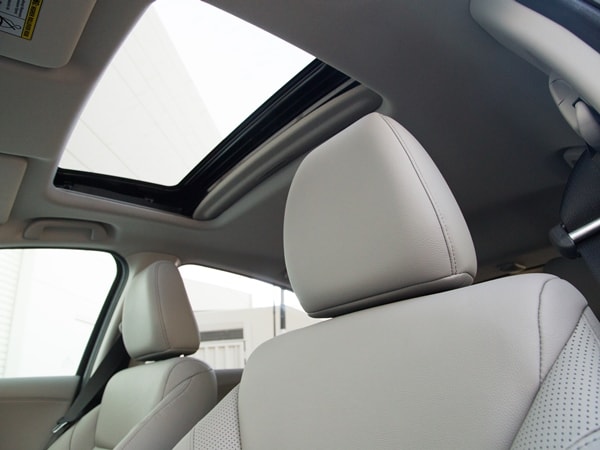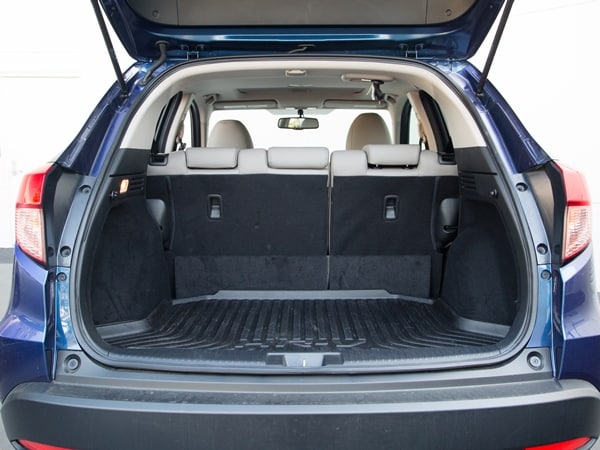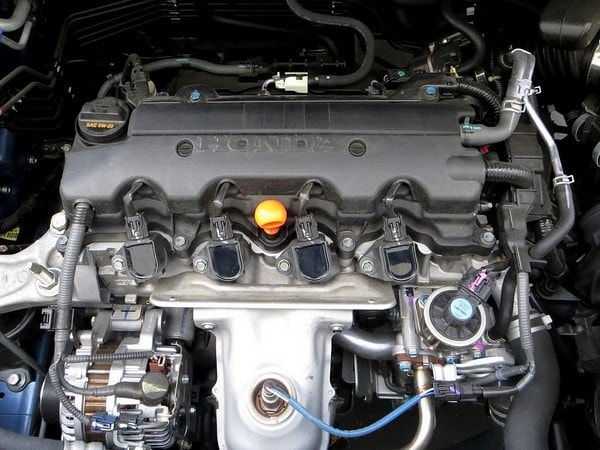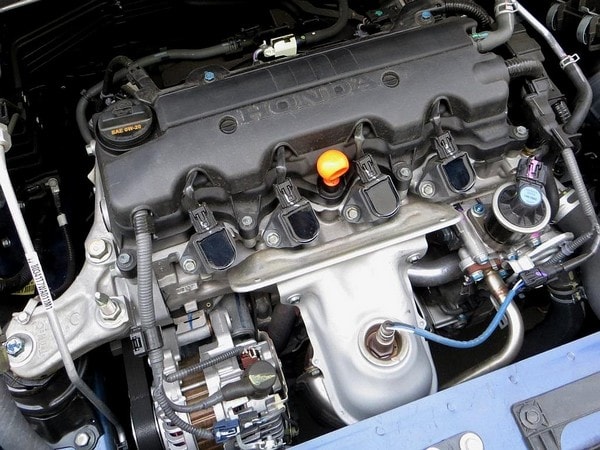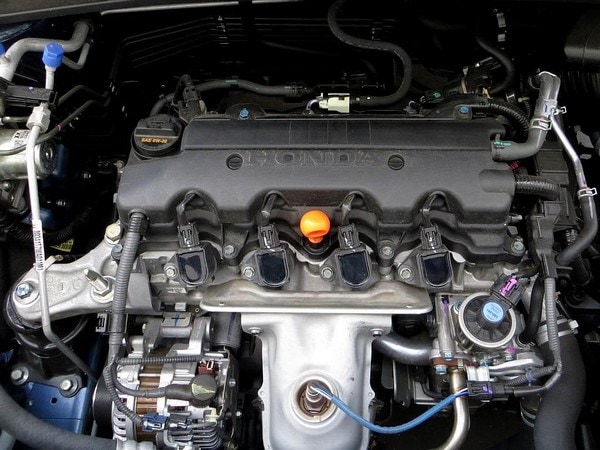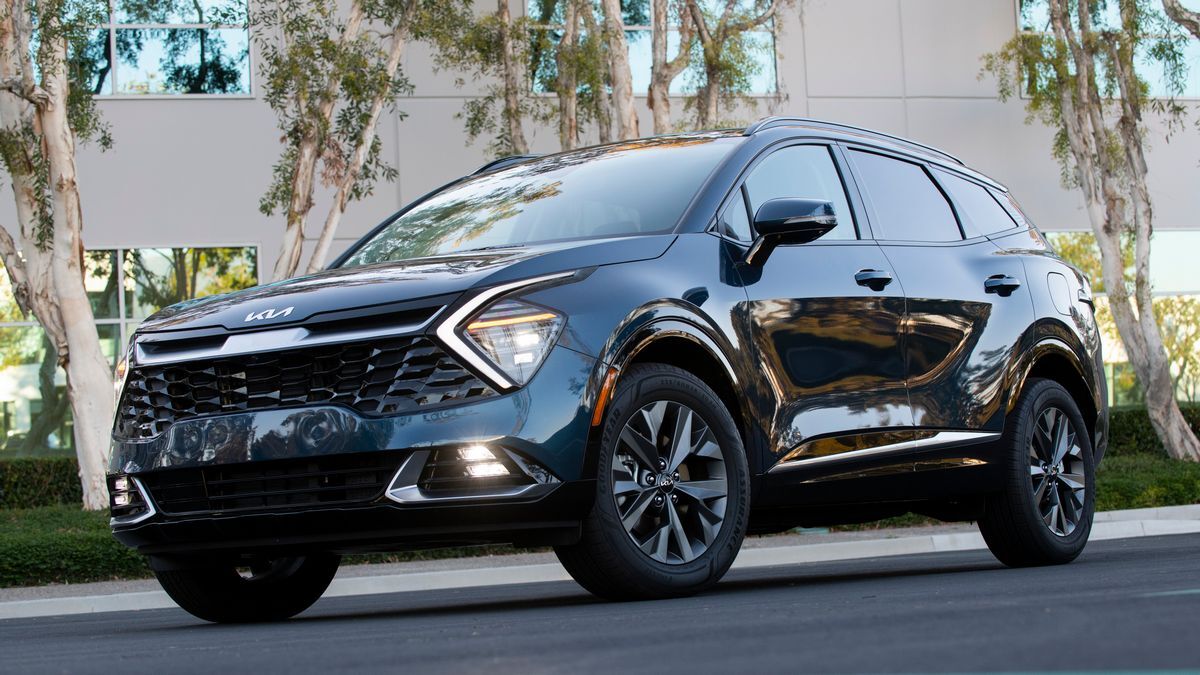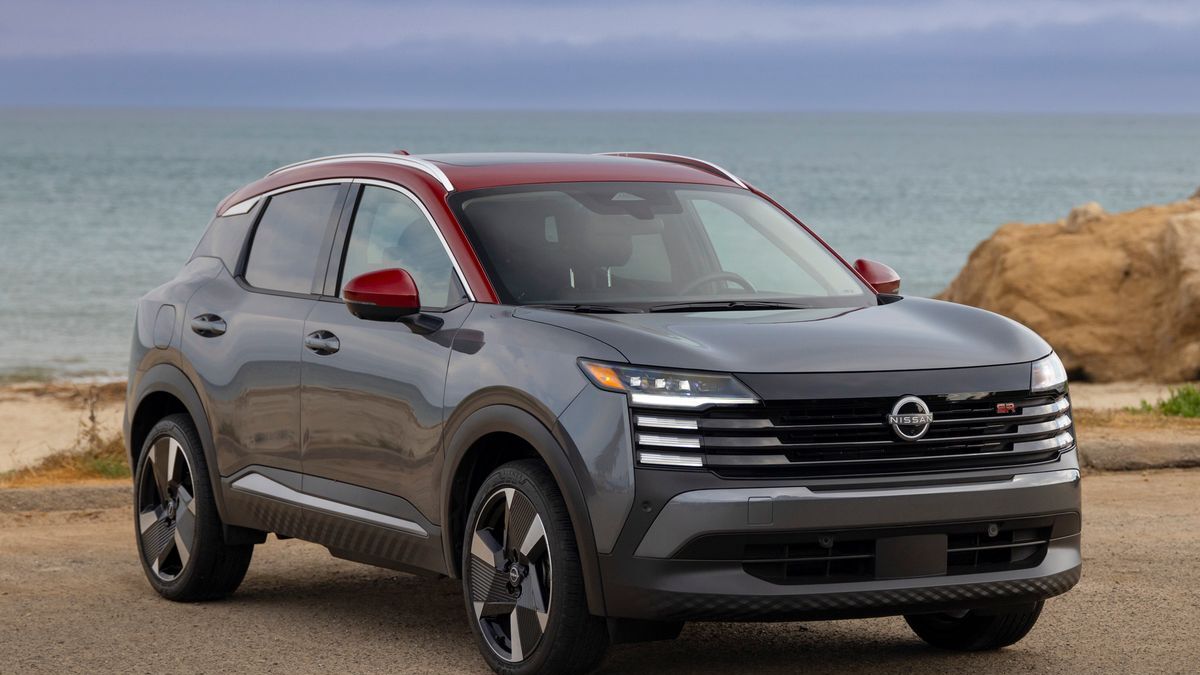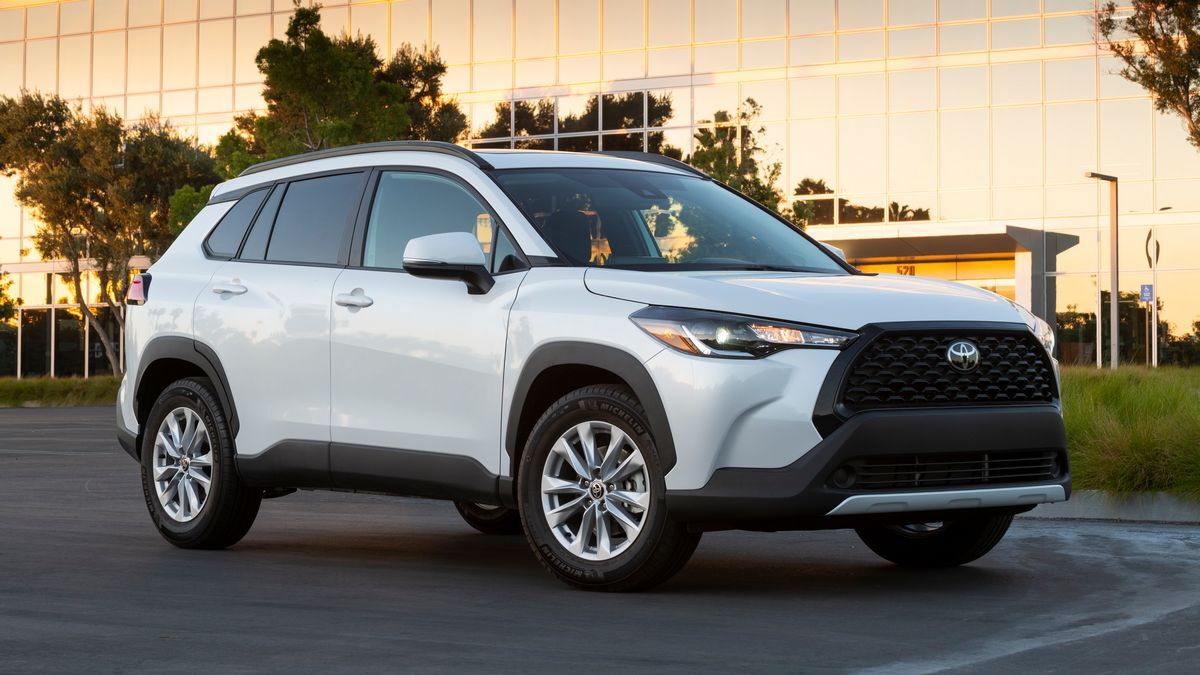Another month is in the books and we’re back with another update on our Honda HR-V long-termer. Fresh off its top showing in KBB’s recent 2016 Subcompact SUV/Crossover comparison, our all-wheel drive HR-V EX-L with Navi continues to roll along with more miles of trouble-free service. This time around, we’ll take a closer look at the HR-V’s powertrain elements.
Regardless of trim level, transmission type or the number of driven wheels, the sole HR-V engine is a 1.8-liter all-aluminum 4-cylinder that makes a 141 horsepower at 6,500 rpm and 127 lb-ft of torque at 4,300 revs. Culled from the previous-generation Civic, Honda tweaked this 16-valve, single overhead cam engine a bit for this application, including fitting a new air/fuel sensor that helps further tidy up emissions. As before, the engine features efficiency-enhancing multipoint port-style fuel injectors as well as Honda’s i-VTEC valve control setup that opens just one intake valve per cylinder at low engine speeds but both under high-rev/high-load conditions.
Impressive economy, adequate performance
On front-drive LX and EX models, the engine can be paired with a standard 6-speed manual transmission or optional continuously variable automatic. However HR-Vs with Honda’s Real-Time AWD are CVT only, although that transmission does come with a Sport mode as well steering-wheel-mounted shifter paddles. The CVT also brings an ECON button that rolls back response from the drive-by-wire accelerator to help conserve fuel. Front-drive versions of this Honda hauler earn very impressive 28/35 mpg city/highway EPA marks – both of which are better than the base manual but even the AWD models that are 162 pounds heavier are rated at a still-impressive 27/32 mpg.
Also: Class of 2016 — New Cars Ready to Roll
On the flip side, the HR-V’s engine has relatively modest output figures compared to many of its class rivals, a tradeoff most clearly manifested in the form of somewhat lackluster acceleration. Best described as respectable albeit well short of riveting, 0-60 mph times on an AWD version clock in around 9.5 seconds. While Honda’s CVT does merit above-average operational marks and the shift paddles function even when the transmission is in Drive, the engine does end up working harder more of the time. Particularly noticeable during aggressive passing moves or when navigating hilly terrain, that extra laboring also is evident in the normal cut-and-thrust of SoCal city/freeway traffic. Beyond raising the interior decibel level, those elevated rev counts can seriously impact fuel efficiency. While no stranger to 30+ mpg sustained freeway cruising figures, we’ve also seen our HR-V’s economy stats dip well into the mid-20s under worse-case conditions. However, at this point, it’s still averaging over 28 mpg against a 29-mpg combined number.
In the coming months, we’ll be exploring other key facets of the HR-V’s personality and chronicling its time in our long term fleet, so check back regularly to see what’s next.
See past reports on our 2016 Honda HR-V…
More on the 2016 Honda HR-V…
See full review and pricing information on the 2016 Honda HR-V or build and price your own to unlock its Fair Purchase Price, 5-Year Cost to Own and more.
